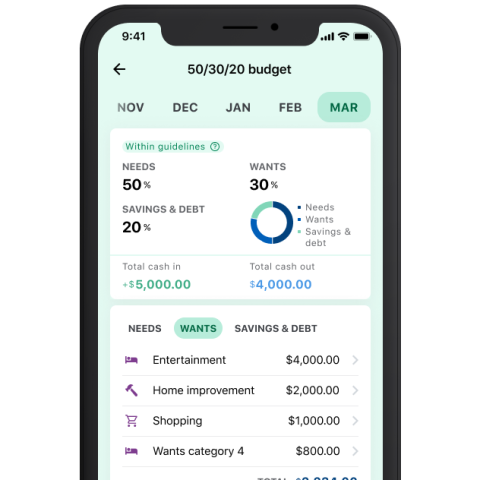Current Unemployment Rate and Other Jobs Report Findings

Many or all of the products featured here are from our partners who compensate us. This influences which products we write about and where and how the product appears on a page. However, this does not influence our evaluations. Our opinions are our own. Here is a list of our partners and here's how we make money.
Updated April 18 with the latest jobless claims data from the Department of Labor.
The unemployment rate declined to 3.8% in March from 3.9% in February, according to the jobs report released on April 5 by the Bureau of Labor Statistics (BLS).
Job gains were much higher than expected for March, with the total coming in at 303,000. The consensus estimated monthly expectation was an increase of 200,000, according to Morningstar, an investing firm.
Job gains were primarily in health care, government and construction.
What are the weekly jobless claims?
For the week ending April 13, weekly jobless claims didn’t change from the prior week, according to the latest data from the U.S. Department of Labor. The weekly jobless claims, or initial claims, are the number of unemployment insurance claims filed in the past week. Claims remained steady throughout 2023, but recent data shows some of the lowest levels of initial claims since September 2022.
The advance figure for seasonally adjusted weekly initial claims for the week ending April 13 was 212,000 — the same as the previous week’s revised level, Labor Department data released on April 18 shows. The new four-week moving average was 214,500, unchanged from the previous week’s average, which was revised up to the same average.
The advance seasonally adjusted insured unemployment rate — the rate of continuous covered unemployment claims divided by covered employment — was 1.2% for the week ending April 6. The rate is unchanged from the unrevised rate for the previous week.
States with the highest insured unemployment rates, week ending March 30:
New Jersey: 2.6%
California: 2.4%
Minnesota: 2.4%
Rhode Island: 2.3%
Massachusetts: 2.1%
Illinois: 1.9%
New York: 1.9%
Pennsylvania: 1.8%
Washington: 1.8%
Alaska: 1.7%
States with the largest increases in initial jobless claims, week ending April 6:
New Jersey: +4,339
New York: +2,499
Pennsylvania: +1,783
Texas: +1,523
Florida: +977
States with the largest decreases in initial jobless claims, week ending April 6:
Iowa: -1,418
California: -631
Ohio: -530
Nevada: -362
Maryland: -352
How many jobs were added in March?
The economy added 303,000 (nonfarm) jobs in March, according to the BLS.
270,000 in February 2024
256,000 in January 2024
290,000 in December 2023
199,000 in November 2023
150,000 in October 2023
336,000 in September 2023
187,000 in August 2023
187,000 in July 2023
209,000 in June 2023
339,000 in May 2023
253,000 in April 2023
165,000 in March 2023
248,000 in February 2023

What is the current unemployment rate?
The current unemployment rate is 3.8% for March, down from 3.9% in February. The rate is not dramatically different from unemployment rates during 2023. In March 2023, the unemployment rate was 3.5%.
Is unemployment rising or falling?
The unemployment rate has remained low and stable, fluctuating between 3.4% and 3.9% since Dec. 2021. The rate declined from February to March.
How to calculate the unemployment rate
The unemployment rate is calculated by dividing the number of unemployed people by the number of people in the labor force. (The labor force is considered the sum of those who are currently working or looking for work.) The result is then multiplied by 100 to get a percentage:
Number of unemployed people / Labor force x 100 = X%, which is the unemployment rate
What is the labor force participation rate?
The labor force participation rate changed little from February (62.5%) to March (62.7%), according to the Bureau of Labor Statistics. The labor force participation rate is the percentage of the population that is working or looking for work.
The rate is calculated as the labor force divided by the total population that’s eligible to work. (The Bureau of Labor Statistics defines the total population that’s eligible to work as the “civilian noninstitutional population,” which refers to people ages 16 and older who are not in military service or incarcerated.) The result is multiplied by 100 to get a percentage:
Labor force / Civilian noninstitutional population x 100 = X%, which is the labor force participation rate
Since October 2002, the labor force participation rate was lowest in April 2020 (60.1%) and highest in June 2003 (66.5%), according to BLS data.
How is the job market right now?
In recent months, key labor market indicators — job openings, quit rate and layoffs — showed the tight labor market is beginning to loosen. But continuous job growth combined with consistently below-4% unemployment shows the job market remains resilient.
What does the Job Openings and Labor Turnover Summary report show?
The latest Job Openings and Labor Turnover Summary (JOLTS), released on April 2, shows job openings were 8.8 million in February 2024.
8.7 million in January 2024
8.9 million in December 2023
8.9 million in November 2023
8.7 million in October 2023
9.6 million in September 2023
9.6 million in August 2023
8.8 million in July 2023
9.6 million in June 2023
9.8 million in May 2023
10.1 million in April 2023
9.6 million in March 2023
9.9 million in February 2023
The seasonally adjusted job openings rate in February was 5.3% — for the third consecutive month. By comparison, the job openings rate in February 2023 was 6%.
The number of job openings in February grew in finance and insurance; state and local government, excluding education; and arts, entertainment, and recreation. Job openings declined in information and in the federal government.
The rate of layoffs increased slightly at 1.1%, according to the JOLTS report. Layoffs and discharges went up in accommodation and food services, as well as arts, entertainment and recreation.
What is the quit rate?
The JOLTS report also shows the quit rate in February was unchanged from January at 2.2% for the fourth month in a row. By comparison, the quit rate in February 2023 was 2.6%.
Economists say quit rates are a key factor in the health of employment prospects since quitting shows that workers feel safe making a job switch within their sector or outside it entirely.
The current quit rate is consistent with pre-pandemic levels after peaking at 3% in both Nov. 2021 and April 2022.
Are wages increasing?
Wage growth is moderating from what it was a year ago but is still higher than it was pre-pandemic, according to data from the Federal Reserve Bank of Atlanta. The three-month moving average of median hourly wage growth — when measured over the previous 12 months — has slowed from its peak in the summer of 2022.
For March the three-month wage growth percent change from a year prior was 4.7%, which is 0.3 percentage points lower than February’s rate (5%). By comparison, the percent change for March 2023 from a year prior was 6.4%. If you look back even further, at the percent change for February 2020 from a year prior, the rate was 3.7%.
» MORE: Is the pay gap real?
Below, the Federal Reserve Bank of Atlanta data for March shows a steady decline in the three-month moving average of wage growth compared to the peak in June 2022 and July 2022.
What does the Employment Cost Index Show?
Increases in compensation costs slowed again in the fourth quarter of 2023, according to the most recent BLS Employment Cost Index, which measures wage and salary growth. Wages and salaries, as well as benefits comprise total compensation costs.
The Jan. 31 report shows compensation costs increased by 0.9% compared with 1.1% in the third quarter; 1.0 in the second quarter of the year; and 1.2% in the first quarter of the year.
Year-over-year measurements show a more significant slowdown: For the 12-month period ending December 2023, compensation costs increased 4.2%; the previous three quarters, when measured year-over-year, showed an increase of 4.3% (Q3 2023); 4.5% (Q2 2023); 4.8% (Q1 2023), respectively.
For the 12-month period ending in December 2023, wages and salaries increased 4.3% compared with 5.1% in the 12-month period ending in December 2022.
Meanwhile, benefit costs increased 3.8% over the previous 12 months compared to a 4.9% increase for the 12-month period ending in December 2022.
Will unemployment rise?
The labor market is still tight, but is also showing some signs of slackening.
The Federal Reserve hiked interest rates 11 times since March 2022 in an effort to bring down inflation, which is expected to eventually lead to a higher unemployment rate. However, the Fed has slowed down; the Central Bank paused rates at its meetings in June, September, November, December, January and March. And the Fed has indicated it will likely cut interest rates in 2024, but it's unclear exactly when that might happen.
» MORE: What is the minimum wage?
When is the next jobs report?
The next jobs report will show data for April and it will be released on May 3.
(Photo by Spencer Platt/Getty Images News via Getty Images)


